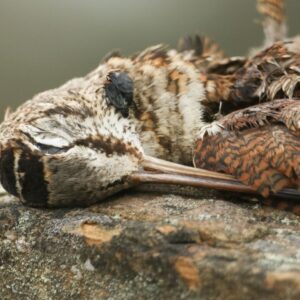Out in the field: Monitoring swallow roosts along Grand River
Imagine being out on a calm, methodical river, while you are paddling a canoe with the sun slowly inching its way down towards the horizon. Imagine a group of blackbirds flying over your head towards the marshes across an orange-yellow sky as if they were part of an artistic masterpiece. Imagine a majestic Osprey, perched on a dead-standing tree, scanning the river for its next meal.
Imagine everything coming to a standstill, while you wait on your canoe in the middle of the marshes, with goosebumps across your body as you know you are about to witness a natural phenomenon – something that has been happening since time immemorial, but something only a handful of people ever get to experience.
This was the lead up for Alex Bencke (Nature Canada’s Conservation Technician) and I, as we paddled north on the Grand River, towards the marshes near Dunnville, ON where we were expecting to monitor a post-breeding swallow roost.

Roosts tend to form starting in late July and disband in early September. They are where swallows congregate in huge numbers—anywhere from hundreds to hundreds-of-thousands—before they start their fall migrations to their wintering grounds in Central and South America. They occur in areas with good foraging habitat, which also offers swallows protection from predators.
Swallows congregate in these sites every night around sunset and disperse in the morning right before sunrise. If a roost is big enough, their morning dispersal can be seen on weather radar.
There are many mysteries surrounding the function and dynamics of a swallow roost. When so many birds— especially at-risk birds such as swallows—congregate in such a small area, monitoring and protecting these roost sites becomes vital for the long-term protection of swallows.
Back on the river, we waited patiently as we knew it was only a matter of time before we would also get a chance to view the swallows returning from their day’s activities to the marshes to roost for the night. We were not left disappointed. Fifteen minutes before sunset, they arrived. First in small groups of hundreds, but eventually there were so many swallows that they blanketed the sky. So many swallows that we couldn’t see where their numbers ended. They spent nearly twenty minutes streaming over our heads and vocalizing. We were left speechless.
Only when the swallows had settled in the marshes for the night were we snapped out of our awestruck state. Even if we don’t have all the answers to the purpose of a roost yet, it was obvious this was something special that must be protected.
Just in this particular roost alone, we estimated there to be anywhere from 17,000-22,000 swallows, with members from each swallow species found in Ontario. An incredible feat as all six species of swallows commonly found in Ontario are undergoing rapid declines since the 1970s.
To learn more about the work Nature Canada is doing to protect our swallows, click here.
Roost monitoring is part of Nature Canada’s Save Our Swallows campaign, funded by the Ontario Trillium Foundation.



